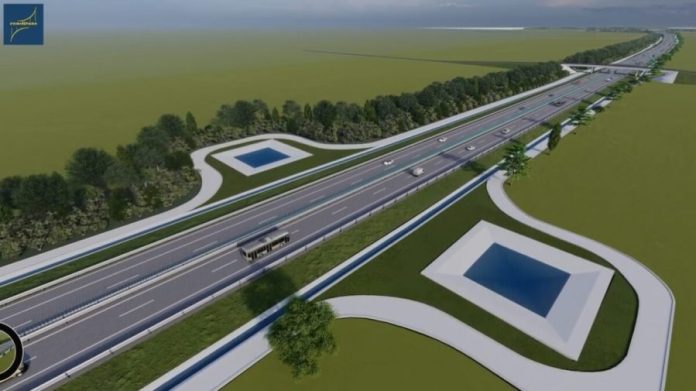The Republic of Moldova advanced a 3 billion euro project to the European Union for a highway between Ungheni, Chisinau and Odessa. The purpose of the route is to interconnect the Odessa-Chisinau-Iași-Târgu-Mureș-Budapest-Vienna-Munich regions through the road corridor.
The idea of the highway was introduced to the public agenda, as early as December 2018, by a group made up of seven local NGOs: IDEP Moldova, Societatea Ecologică “Biotica”, EcoContact, Meridian Media Group, Rural Renaissance, Tourism Development Association in Moldova and the Employers’ Association of the Tourism Industry of the Republic of Moldova, which later formed the “Moldova vrea Autostrada” working group.
“In 2018, when we had debates and discussions in the European Parliament, the European Commission, but also with the European Investment Bank, one of the major impediments was the fact that the highway would pass through the Transnistrian area. We insist that the step must be taken to initiate the work with a feasibility study, which will answer the following questions: where is this highway feasible and if from a security point of view or any other consideration it will not be feasible through Transnistria, where the section changes (n.r. what implies changes in the document)”, said Iurie Calestru, director of the Institute for Development and Expertise of Projects in Chisinau (IDEP).
“The amended document is the basis for discussions with any international financial institution. We understand very well that although the feasibility study is about a grant, the construction mostly involves loans”, added the IDEP director.
On the territory of the Republic of Moldova, the highway is to start near the town of Ungheni, from the bridge over the Prut river, a work of art that will be built as part of the “Unirii” Highway, and will follow the route of the European road E58, past the towns of Pîrlița and Cornești. Afterwards, the highway will pass on the M5 route (popularly known as “betoncă”), going to Chisinau, past Cricova. Afterwards, the project foresees two possibilities of continuing the highway route – through Transnistria (past Cuciurgan) or on the route leading to the Palanca customs post (through Căușeni and Ștefan Vodă districts), the second possibility being more likely.
Finally, an efficient transport system will be created, which will satisfy citizens’ need for mobility and facilitate trade on domestic and international markets, taking into account the role that Moldova will have as a bridge between the EU and the countries of the Commonwealth of Independent States (CSI), which is the general objective of the Transport and Logistics Strategy for the years 2013-2022, approved by the Government of the Republic of Moldova. It will be achieved by continuing to develop and rehabilitate the priority road network, especially those that are part of the Trans-European Transport Network (TEN-T), extended over the territory of the Eastern Partnership countries.
According to the most optimistic scenario, if all steps proceed normally, the highway could be ready in about eight to ten years.
The extension of the highway from Chisinau to Odesa is of economic importance for the European Union, as an impressive number of goods from China and Asian countries arrive in the Ukrainian port, which later enter the European market. The war can be an obstacle, but it can also be a turning point and relaunch of the development of the road infrastructure, mostly destroyed by the Russian bombs.
At the end of July, the European Commission proposed the extension of four TEN-T transport corridors to Ukraine and the Republic of Moldova, in order to improve transport connectivity between these two countries and the EU. The four corridors will be expanded to include key points such as Lviv, Kyiv, Chisinau and the ports of Mariupol and Odesa.
FOR THE MOST IMPORTANT NEWS, SUBSCRIBE TO OUR TELEGRAM CHANNEL!



